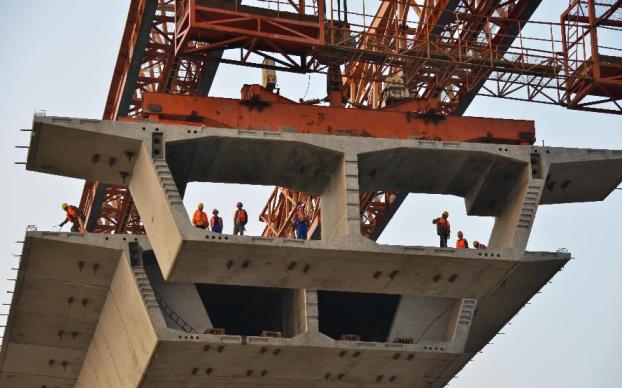Introduction to Box girder bridge

A box girder bridge is a bridge in which the main beams comprise girders in the shape of a hollow box. The box girder normally comprises either prestressed concrete, structural steel, or a composite of steel and reinforced concrete. The box is typically rectangular or trapezoidal in cross-section. Box girder bridges are commonly used for highway flyovers and for modern elevated structures of light rail transport. Although normally the box girder bridge is a form of beam bridge, box girders may also be used on cable-stayed bridges and other forms.
Construction
If made of concrete, box girder bridges may be cast in place using falsework supports, removed after completion, or in sections if a segmental bridge. Box girders may also be prefabricated in a fabrication yard, then transported and emplaced using cranes.
For steel box girders, the girders are normally fabricated off site and lifted into place by crane, with sections connected by bolting or welding. If a composite concrete bridge deck is used, it is often cast in-place using temporary falsework supported by the steel girder.
Either form of bridge may also be installed using the technique of incremental launching. Under this method, gantry cranes are often used to place new segments onto the completed portions of the bridge until the bridge superstructure is completed
Advantages and disadvantages
Compared to I girders, box girders have a number of key advantages and disadvantages. Box girders offer better resistance to torsion, which is particularly of benefit if the bridge deck is curved in plane. Additionally, larger girders can be constructed, because the presence of two webs allows wider and hence stronger flanges to be used. This in turn allows longer spans. On the other hand, box girders are more expensive to fabricate, and they are more difficult to maintain, because of the need for access to a confined space inside the box.
Corrosion of the steel cables that provide the post-tensioning for box girder bridges has become a major concern. On December 13, 2009, the Indiana Department of Transportation (INDOT) closed the Cline Avenue (SR-912) bridge over the Indiana Harbor and Ship Canal after a routine inspection revealed significant corrosion of the steel tensioning cables and rebar within the box girders due to water seeping through cracks in the bridge deck. After determining the level of corrosion compromised the bridge’s structural integrity beyond repair, INDOT decided to permanently close and eventually demolish the span.
